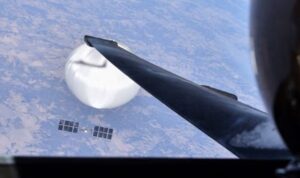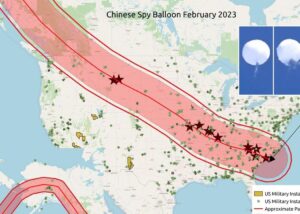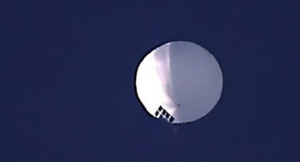
Gen. Mark Milley, chairman of the U.S. Joint Chiefs of Staff, has revealed that the enigmatic Chinese “observation balloon” shot down near the U.S. East Coast in February was not, in fact, involved in intelligence gathering, CBS News reports. This marks a twist in the initial narrative that claimed the ship was intended to spy.
The Chinese Globe and its Trajectory
The mysterious observation balloon made its first appearance in the Alaskan sky in January, from where it headed south, crossing the entire United States. His high-altitude flight came to an end when he was shot down off the coast of South Carolina in early February. During this time, U.S. authorities claimed that the balloon had been sent by China for the purpose of intelligence gathering.
The Intelligence Assessment
However, in recent statements to a US broadcaster, General Milley emphasized that the intelligence community reached a “high-confidence assessment” concluding that the observation balloon did not conduct any intelligence-gathering operations.

China and Atmospheric Factors Explained
From the beginning, the Chinese government defended that the balloon was a civilian ship that had been diverted from its course by strong atmospheric currents. Milley now admits the possibility that extremely strong winds, especially over Hawaii, carried the balloon eastward across the United States, noting that the plane’s engine in question could not have fought those atmospheric conditions at that altitude.
Technical Characteristics of the Balloon
Despite its inability to gather intelligence, General Milley noted that the balloon was equipped with sensors and transmitters that could have enabled that capability. However, he claimed with certainty that the balloon did not transmit any intelligence to China.

US and Chinese reaction
The situation prompted a strong reaction from U.S. Secretary of State Antony Blinken, who called the Chinese government’s actions “unacceptable and irresponsible.” In response, he canceled a planned visit to Beijing. China, for its part, maintained its version that the balloon was a civilian craft deviated from its original course.
This change in the perception of the Chinese “spy balloon” sheds light on an incident that initially raised concerns in the realm of intelligence and international relations. Although the observation balloon was technically equipped for intelligence gathering, evidence suggests it was not used for that purpose. This development may have significant implications for U.S.-China diplomacy.
For more articles like this, click here.
